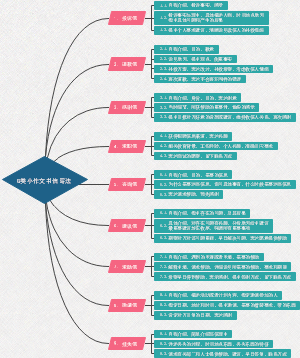导图社区 Unit 2.2 Communicative Principles and Task
- 217
- 0
- 1
- 举报
Unit 2.2 Communicative Principles and Task
这是一篇关于Unit 2.2 Communicative Principles and Task的思维导图,包含differences between language used in real life and language taught in the classroom。
编辑于2022-04-02 13:39:42- Unit 15 Assessent in Language Teaching
这是一篇关于Unit 15 Assessent in Language Teaching的思维导图,包含different criteria or references of assessment。
- Unit 4 Lesson planning
Flexibility means preparing some extra and alternative tasks and activities so that teachers 。
- Unit 6 Teaching Pronunciation
focus on individual sounds, especially those sounds that are difficultto learn.
Unit 2.2 Communicative Principles and Task
社区模板帮助中心,点此进入>>
- Unit 15 Assessent in Language Teaching
这是一篇关于Unit 15 Assessent in Language Teaching的思维导图,包含different criteria or references of assessment。
- Unit 4 Lesson planning
Flexibility means preparing some extra and alternative tasks and activities so that teachers 。
- Unit 6 Teaching Pronunciation
focus on individual sounds, especially those sounds that are difficultto learn.
- 相似推荐
- 大纲
Communicative Principles and Task
7. Task-based Language Teaching
Definition 1.TBLT refers to an approach based on the use of tasks as the core unit of instruction in language 2.TBLT is a further development of CLT. 3.It shares the same beliefs.as language should be learned as close as possible to how it is used in real life. 4.However,it has stressed the importance to combine form focused teaching and communicaton focused teaching
A Definition a task is an activity which requires learners to arrive at an outcome from given information through some processof thought and which allows teachers to control and regulate that process
components (ppp+c purpose,product,process,context,)
purpose: making sure the students have a reason for undertaking the task
process: getting the students to use learning strategies such as problem solving, reasoning, inquiring, conceptualizing and communicating
Product:there will be some form of outcome, either visible or invisible
context: this can be real, simulated or imaginary, and involves sociolinguistic issues such as the location, the participants and their relationship, the time, and other important factors
task V.S exercise
task: focus on the complete act of communkation (fluency)
exercise:focus on individual aspects of language.such as vocabulary.grammar or indenidual skills (accuracy)
exercise-task:this kind of activity consists of contextualised practice of language items
How to design tasks
1 Think about students’ needs, interests, and abilities Suitable appropriate。Accessible
2.Brainstorm possible tasks Have communicate purpose.be goal oriented
3 Evaluate the list :Educational value/ Appropriateness to students'needs,interests andabilities/Availability of suitable resources/Time available
4 Choose the language items: 1.consider the level of linguistic difficulty in orderto decide whether to accept reject or modify a task taht you originally planned 2.work out possible language knowledge and skillsneeded to accomplish the task(pre task languagepractce to prepare ss linguistically)
5 Preparing materials : prepare the materials that the ss need to carry outthe tasks
three stages
pre-task Teachers introduce the topic and task task cycle task,planning.report language focus analysis and practice 参考31页六边形图
9. PPP
Presentation, Practice and Production
Presentation Teachers introduce new language items in a context
Practice controlled practice,such as drilling, repetition. dialogue reading,etc.
Production produce language in more meaningful ways,such as role play,a drama,an interview,etc.
参考P32页,三角形图谱
Five step teaching method
revision+presentation.practice production+consoildation
10. Differences between PPP and TBL
the way students use and experience the language in TBLT is radically diffrernt from PPP in 3 aspects
task/planning/report
TBLT can provide a context for grammar teaching and form-focused activities. PPP is different in this aspect.
context/natural language exposure/activities/skills
11. Appropriateness of CLT and TBLT in the Chinese context
CLT
1.culturally appropriate 2.the design of syllabus for teaching purposes 3.suitability for all age level of learners or allcompetence level
TBLT
1.ineffectiveness for presenting new language items 2.time consuming 3.culture of learning (difficult-skills) 4.level of difficulty (linguistic resources to handle)









